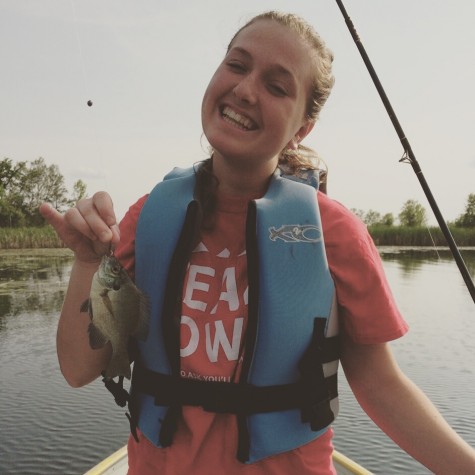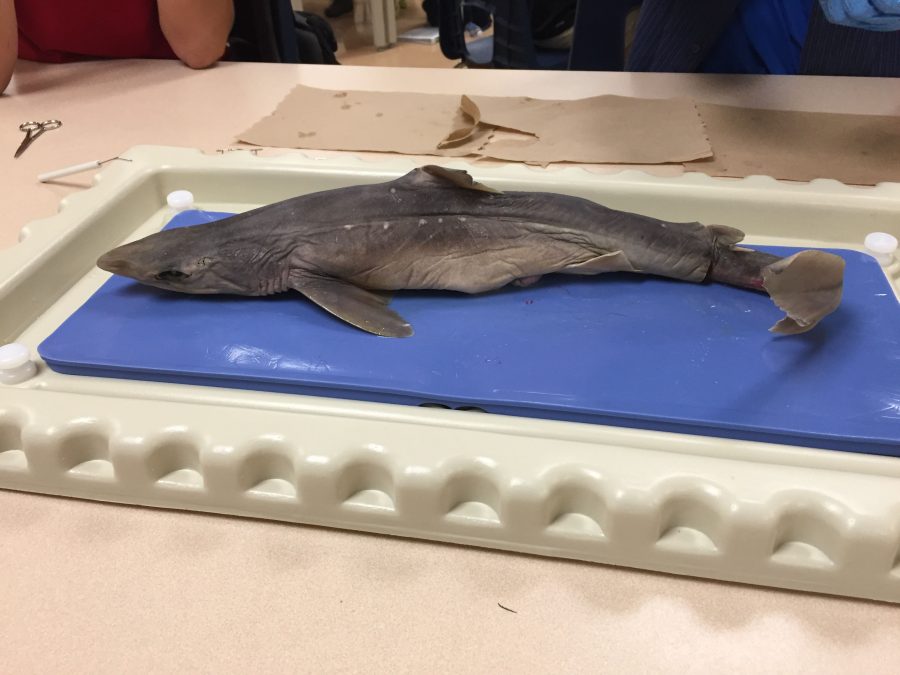Shark Week
The Precedent talks to honors biology teacher Jerry Bell about a new addition to his dissection lab
Q: Is this the first year we’ve done shark dissections?
A: Yes it is. Everyone’s coming up to me and going “We didn’t do that my year.”
Q: Does this mean you didn’t dissect pigs at all this year?
A: No, we are doing pigs [this] week.
Q: Why are we doing sharks too, now?
A: Well, we were looking for something in addition to doing the honors curriculum. So we, as teachers, kind of got together and were like “well, this looks like something the kids would really enjoy [doing].”
Q: Where do you get the sharks from?
A: We go through a catalog–the same place we get the pigs from–so it’s ordered through a catalog. They are farm-raised sharks that that’s what they do, that’s how they make money is raise the sharks for this purpose.
Q: What made you choose sharks over any other animal?
A: Sharks are–again if you think about kids and what kids are interested in–kinda the “ooh, ah!” factor of it. And you know, it’s a little bit larger animal so it’s easier to do the dissection and see the different parts of the fish. A shark is really easy,, the organs are really easy to see.
Q: What do the kids learn from the sharks dissections?
A: Anatomy, physiology. We are looking at them comparative to human anatomy so we are looking at the digestive system, endocrine, the excretory to the circulatory. Then also get to look at their gills as we compare what’s happening in the respiratory systems.
Q: What makes this project so successful with students?
A: It’s hands-on. Kids are working in groups–I like to call them teams because they really have to cooperate really well with each other. Kids that don’t want to touch the shark, they get to be the recorder, they read the questions and keep everybody on task and the other people are doing all the parts that they get the directions for. It’s just kind of a team-building thing where they work well together. And I make that a part of their grade, they have to participate and it’s more fun that way. This is really more of a fun thing that we can tie into what we’ve been learning about.
Q: I heard there was a pregnant shark, do they all come like that or was it luck of the draw?
A: There was two sharks that did, it’s kind of luck of the draw. And this one happened to [have] two babies that were fairly mature, they were probably about three to four inches long. So yeah, it was pretty cool. The whole class was really excited about it and I kept them for my other classes to see.
Q: Can you describe the kids’ reactions when they first opened it up and discovered the babies?
A: Yeah, they didn’t know what it was because they aren’t really obvious. When they open up the abdomen of the shark, there’s a whole bunch of stuff there and they don’t really know what’s what until I walk through it with them and I saw it and I was like, “Oh cool. This one’s got babies.” And they were all like “what???” So I just started pulling them out and I just made an incision in each of the sacks and then pulled the baby shark out so they could see it and it was really pretty cool.
Q: Did you dissect the babies?
A: No, we didn’t dissect the babies, it was just kind of cool to see them. It would be hard to see the same structures.
Q: Anything else we should know?
A: We just wanted kids to be able to do stuff that’s hands-on and see that it’s fun and it isn’t always just about being gross and what not. And the kids that are apprehensive usually turn around and really like it…It’s kind of cool because you learn about the body systems and how things work and can actually see that they are real.
Q: What classes get to dissect sharks?
A: Honors biology.

Emma Fernandez is a senior and this is her third year writing for The Precedent. She is the editor in chief. She plays softball and golf, but loves playing...




